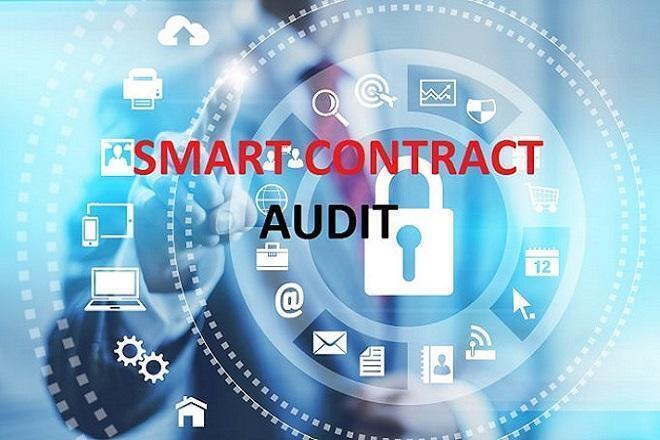How Smart Contract Auditing Prevents Costly Blockchain Bugs?
Blockchain technology promises decentralized, transparent, and secure transactions — but the magic happens through smart contracts, the self-executing code that governs digital agreements. However, even a tiny flaw in a smart contract can lead to disastrous consequences: millions in lost funds, irreversible errors, and permanent damage to reputations.
This is where smart contract auditing steps in as a crucial safeguard. In this blog, we’ll explore what smart contract auditing is, why it matters more than ever, how it helps prevent costly bugs, and what best practices projects should follow in 2025 to keep their blockchain applications safe and trustworthy.
What Are Smart Contracts and Why Are They Vulnerable?
Smart contracts are pieces of code running on blockchain networks like Ethereum, Binance Smart Chain, or Solana. They automate agreements without intermediaries, ensuring that once deployed, the contract executes exactly as programmed.
Why Vulnerabilities Occur
- Complexity of Code: Smart contracts often handle complex logic, multiple functions, and huge sums of money.
- Immutability: Once deployed, smart contracts cannot be easily changed or patched.
- Human Error: Developers can introduce bugs due to oversight, rushed development, or lack of expertise.
- Evolving Attack Vectors: Hackers continuously find novel ways to exploit vulnerabilities.
Real-World Impact of Bugs
Examples such as the infamous DAO hack in 2016 (loss of $50 million) and the more recent Poly Network exploit ($600 million at stake) highlight how even a single vulnerability can trigger catastrophic outcomes.
What Is Smart Contract Auditing?
Smart contract auditing is a systematic review process conducted by expert security auditors who analyze the contract’s source code to identify potential vulnerabilities, logical errors, and inefficiencies before deployment.
Key Objectives
- Detect bugs and security flaws.
- Ensure compliance with best coding practices.
- Verify that the contract functions as intended.
- Recommend improvements for optimization and gas efficiency.
Types of Audits
- Manual Code Review: Expert auditors read through the source code line by line.
- Automated Tools: Static analysis tools scan for common vulnerabilities.
- Formal Verification: Mathematical proofs validate contract logic (used in high-stakes projects).
- Penetration Testing: Simulated attacks test the contract’s defenses.
Common Smart Contract Vulnerabilities
Understanding what auditors look for helps appreciate the importance of the process.
Reentrancy Attacks
One of the most infamous bugs, where a malicious contract repeatedly calls back into the vulnerable contract before the first invocation completes, draining funds.
Integer Overflow and Underflow
When numerical operations exceed or go below the maximum/minimum storage capacity, leading to unexpected behavior.
Access Control Issues
Improper permissions allow unauthorized users to perform restricted functions.
Timestamp Dependence
Relying on block timestamps for critical logic can be exploited by miners manipulating timestamps.
Denial of Service (DoS)
Bugs that allow attackers to block or slow down contract operations.
How Auditing Prevents Costly Bugs
Early Detection Saves Millions
Catching vulnerabilities before deployment avoids costly exploits and reputational damage. For example, audit firms like CertiK and Quantstamp have prevented losses totaling billions by identifying critical flaws early.
Building Investor and User Confidence
Audited contracts signal professionalism and reliability, attracting investors, partners, and users who want to minimize risk.
Regulatory Compliance
Audits help projects align with emerging regulations that emphasize security and consumer protection.
Continuous Improvement
Auditing is not a one-time event but part of ongoing security posture, encouraging projects to maintain high standards and update contracts safely.
What Does a Typical Audit Process Look Like?
Step 1: Planning and Scope Definition
Auditors and developers agree on the audit scope, timelines, and deliverables.
Step 2: Manual and Automated Review
Combining human expertise with automated tools maximizes vulnerability detection.
Step 3: Reporting
Auditors provide a detailed report outlining:
- Severity levels of identified issues.
- Suggested fixes.
- Code quality assessments.
Step 4: Remediation and Re-Audit
Developers fix vulnerabilities and may request re-audit to verify changes.
Step 5: Final Certification and Publication
Many projects publish audit reports publicly to promote transparency.
Best Practices for Smart Contract Auditing in 2025
Choose Reputable Audit Firms
Opt for firms with proven track records, transparent methodologies, and expertise in your blockchain ecosystem.
Adopt a Layered Security Approach
Combine audits with bug bounty programs, formal verification, and runtime monitoring.
Plan Audits Early
Incorporate auditing in the early stages of development to avoid costly rewrites.
Continuous Education
Developers should stay updated on new vulnerabilities and coding standards.
The Role of AI and Automation in Modern Auditing
AI-Powered Static Analysis
New tools use machine learning to detect subtle code anomalies beyond traditional rule-based scanners.
Automated Patch Suggestions
Some advanced platforms recommend fixes automatically, speeding up remediation.
Real-Time Monitoring
Post-deployment monitoring systems can flag suspicious activities indicating possible exploitation attempts.
Case Studies: Auditing Success Stories
Case Study 1: Uniswap V3
Uniswap underwent multiple rounds of auditing and formal verification, resulting in a robust protocol trusted by millions.
Case Study 2: Aave Protocol
Aave’s continuous auditing and security enhancements helped it avoid major hacks despite its huge TVL (Total Value Locked).
Conclusion
Smart contracts are the backbone of blockchain innovation, but their security is non-negotiable. Auditing not only prevents costly bugs but also builds trust, ensures compliance, and supports long-term success. As blockchain ecosystems grow more sophisticated, so must your approach to smart contract security. Invest in thorough auditing now, and save yourself from catastrophic losses later.

